I use an app called Evernote to help me track when I practice. It allows me to take text notes, record myself, and embed images all on one page. I can easily keep track of stuff I’ve been practicing over the last month.
In this lesson, I’ll show you how I use this cool app. I’ll also share my current practice list with some audio clips.
Why bother keeping track?
If you keep track of what you practice today, your practice will be more productive tomorrow.
For example, if I’ve been practicing the slur 3 bowing on four-note patterns today, then when it’s time to practice tomorrow, I don’t have to try and remember what to do. It’s all there in my practice journal. I can get right to the thing I need to work on.
I use bullet points to organize what I’m thinking, planning and writing. I have headings for areas of practice:
- General
- Notes on the quality of practice
- Concepts I’m learning
- Ideas for lessons based on what I’m learning
- Scales / Fingering
- Bowing
- Tunes
- Just a list of tunes I’m learning or reviewing
- If this list gets long I might make sub-headings:
- New tunes
- Review tunes
- Original tunes
- Songs
- I’m trying to do more chord backup while singing songs
Whatever works for you
I love using the Evernote app for tracking practice, journaling, project management and storing information. But it might not be right for you. You might prefer an old-school paper notebook or even an index card.
You don’t have to say a lot. Just list a few things you’re working on:
- Oh Susannah
- D major scale, adding rhythms
- Little lift
- Wildwood Flower
Boom! You can also use it as a place to record questions, problems and challenges.
- Having trouble going from A0 to D3
The point is to bring awareness to what you are learning and practicing over time.
The practice hub
I like to think of the journal as a practice hub. I can quickly see what I’ve been working on so I can decide what to practice today.
I take note of particular scale patterns I’m practicing and then make a little audio recording as a reference. It doesn’t have to be well performed or sound good. It’s just a memory device. Here’s a screenshot of part of my current practice page:
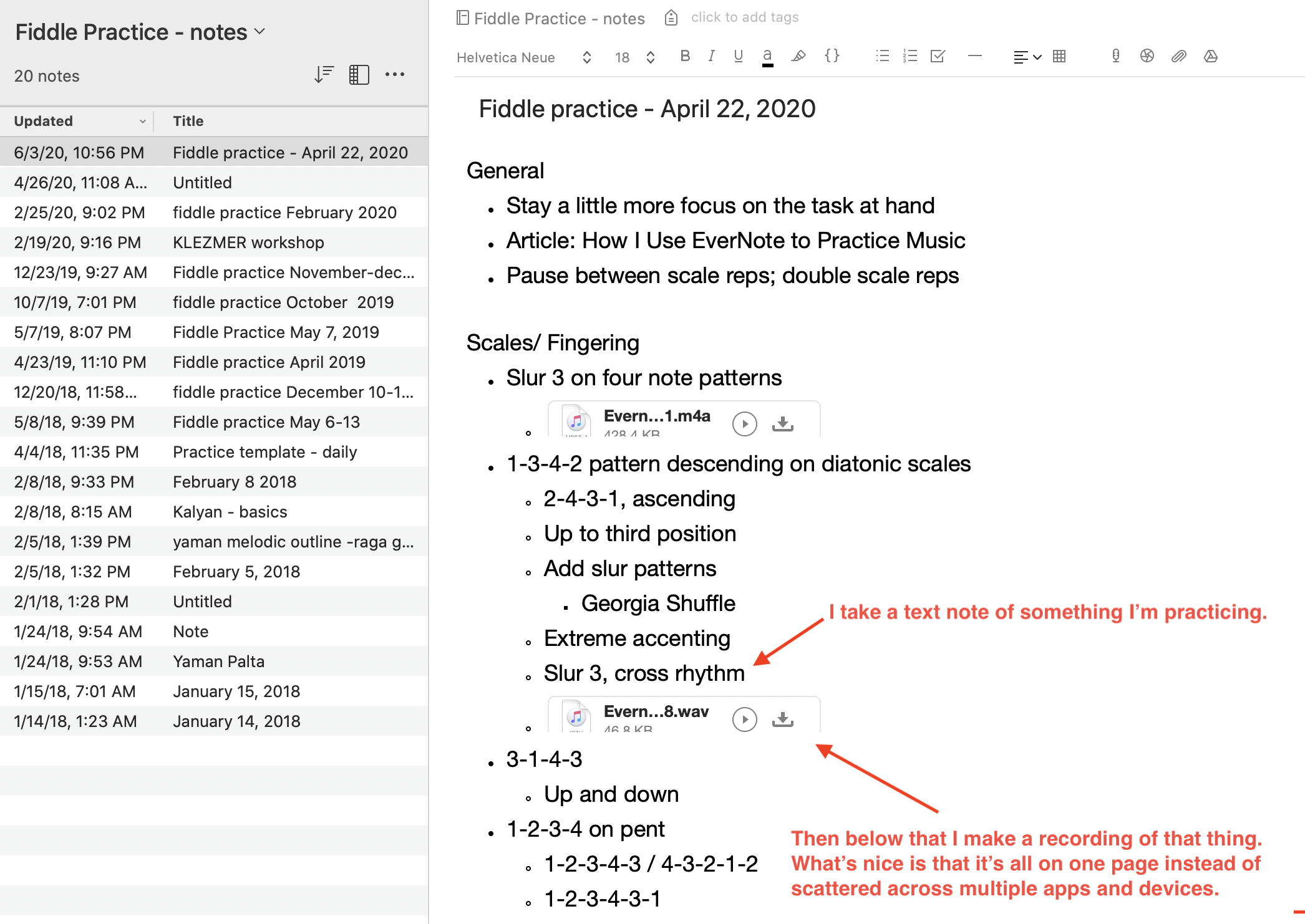
I embed links to videos and other teaching material online.
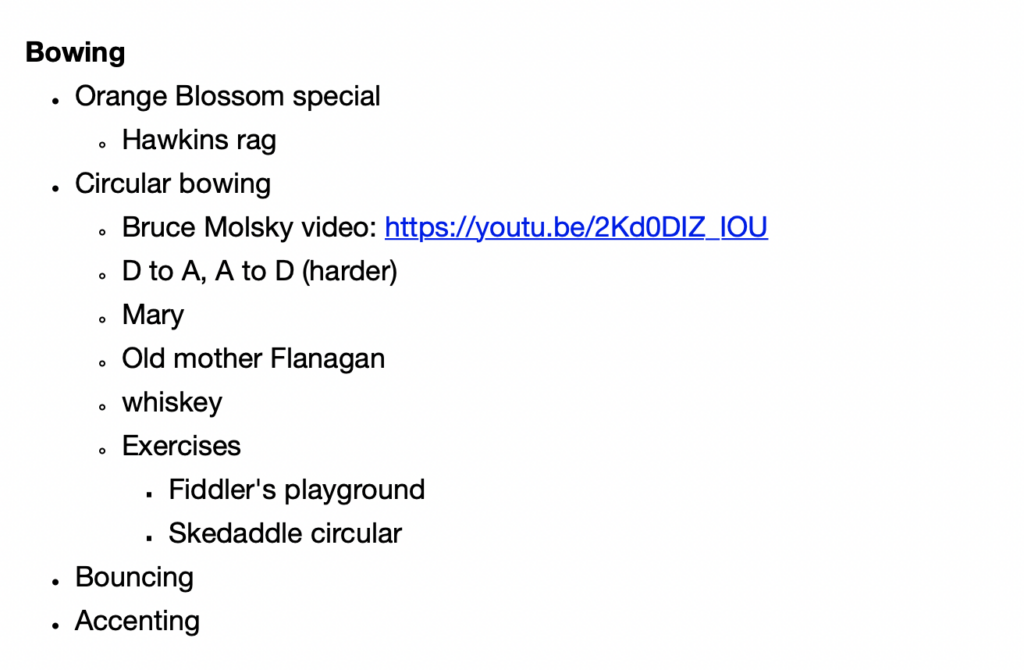
I can also embed photos of sheet music right on the page. That way, I don’t have to get out the book. I mainly look at the sheet music as a way to jog my memory. If I was learning it from scratch, I’d probably use a book or printout.
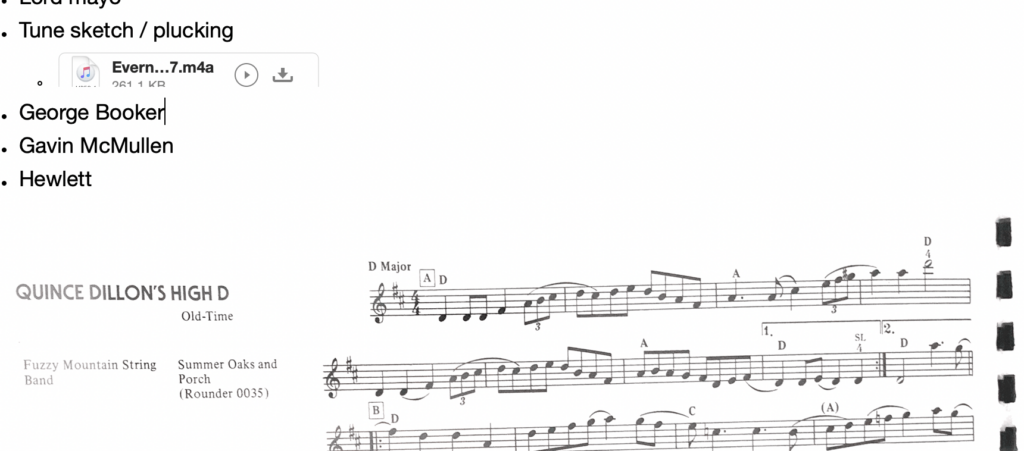
I also use Evernote pages to help me compose and arrange music. I record and label different ideas. Later, I can use this to prepare for recording a high-quality version of the tune.
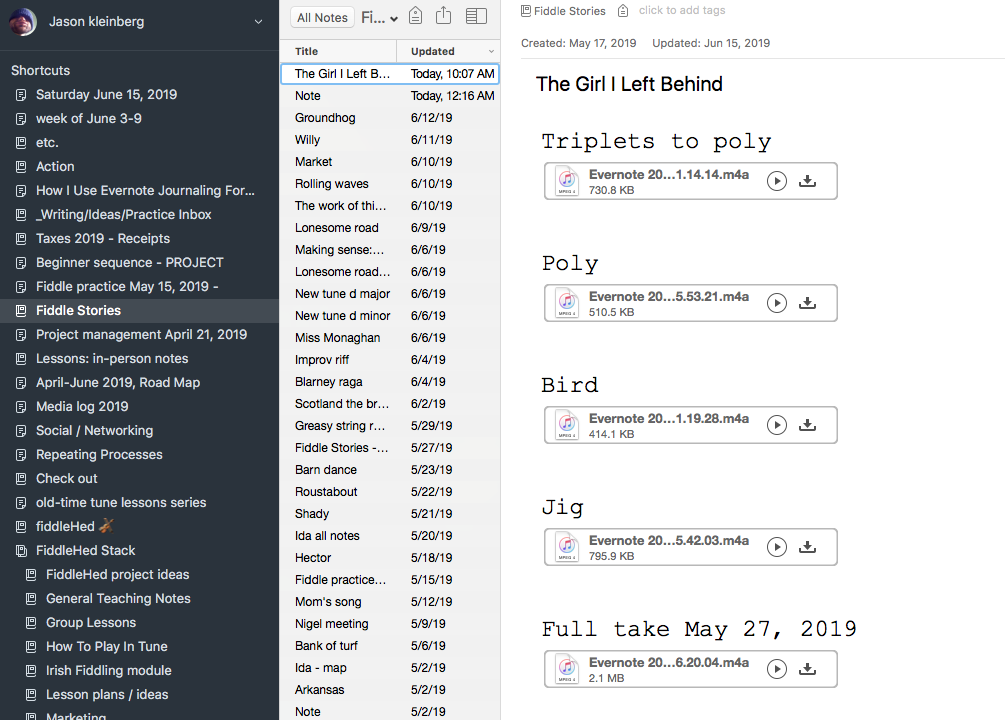
Other options
As I mentioned earlier, you can instead use a paper journal. The easiest way for most folks to record audio will be the voice memos on your phone.
If you already use google docs, then that would work the same way. Both google docs and Evernote are free. I have a paid version of Evernote for some extra features, but I don’t think it’s necessary for journaling.
I also include a simple online journal for you on the site. It’s found in the practice toolkit at the bottom of the lesson pages:
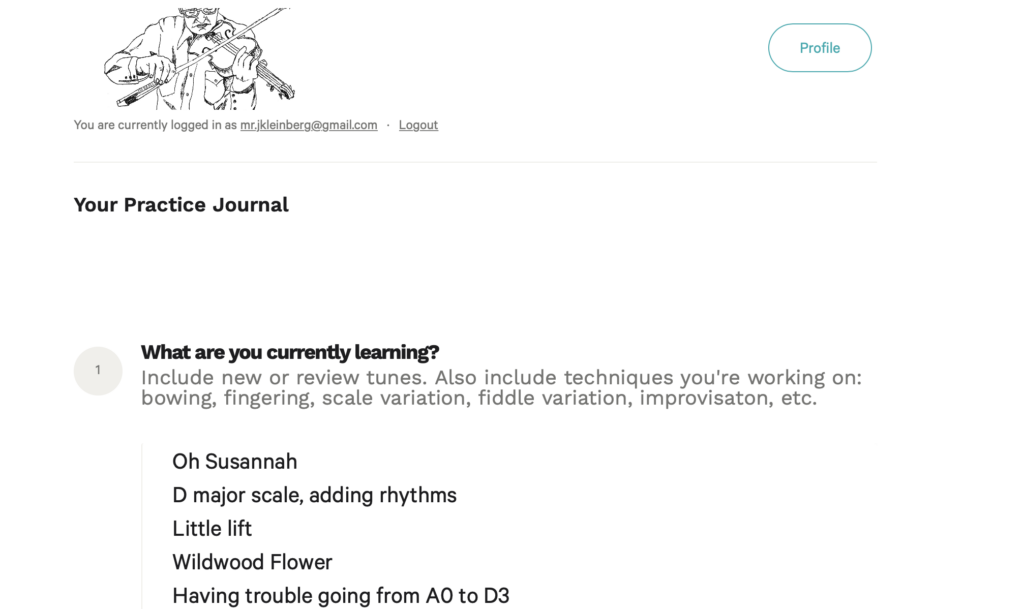
Further learning
What I’m currently practicing
I copied my practice list from Evernote and pasted it below. It’s a big list, but it covers almost three months of practice. the intention is not to brag about what I’m learning, but to help you see the utility of this process.
General
-
Stay a little more focus on the task at hand
-
Article: How I Use EverNote to Practice Music
-
Pause between scale reps; double scale reps
Scales/ Fingering
-
Slur 3 on four-note patterns
-
1-3-4-2 pattern descending on diatonic scales
-
2-4-3-1, ascending
-
Up to third position
-
Add slur patterns
-
Georgia Shuffle
-
-
Extreme accenting
-
Slur 3, cross-rhythm
-
-
3-1-4-3
-
Up and down
-
-
1-2-3-4 on pent
-
1-2-3-4-3 / 4-3-2-1-2
-
1-2-3-4-3-1
-
-
Single finger scales
-
1st, 2nd fingers
-
Discrete vs. “mushy”
-
Pulses, separate bows, slur patterns
-
-
double stops scales
-
G, D, A major
-
D1AL2-D3A3
-
D3A3-D3A4
-
A0E1-D3A4
-
Figure 8, double stops as accents
-
-
Chromatic
-
Mary
-
-
Pedal patterns
- 1-2-3-4-3-2
-
Octave scale
-
Little drummer boy
-
Practice with tremolo
-
Bowing
-
Orange Blossom special
-
Hawkins rag
-
-
Circular bowing
-
Bruce Molsky video: https://youtu.be/2Kd0DIZ_IOU
-
D to A, A to D (harder)
-
Mary
-
Old mother Flanagan
-
whiskey
-
Exercises
-
Fiddler’s playground
-
Skedaddle circular
-
-
-
Bouncing
-
Accenting
-
Bagpipes
-
Single finger
-
False harmonics
-
Flute sound/ playing up the neck
Tunes
-
Quince
-
Breaking Up xmas
-
Arkansas and leather breeches, DADA
-
Frieze britches
-
Galway hornpipe
-
No woman, no cry
-
G Major
-
Single finger
-
Figure 8
-
Strum
-
double stops fingered, hoedown
-
-
-
Pachebel fiddle tune
-
BONAPARTE BLUES
-
Bunch of keys
-
Lord mayo
-
Tune sketch / plucking
-
George Booker
-
Gavin McMullen
-
Hewlett


Thanks, Jason, for the explanation. It was as helpful to see how you think about your practice as finding a way to use Evernote. I think I would like the recording feature of it. Seems that with Evernote, you can combine all the different ways to document what you do.
I’m a fan of paper journals, but being able to make the journal multi-media appeals to me.
~Cindy
I currently use a nice looking book, but that gives me problems when I travel and I don’t want to lug it with me. Will give Evernote a try. Can you tell me which template you use? Seems like there’s a lot to choose from.
Hey @stephatsea,
I don’t use any particular template. I just start listing things I’m working on using bullet points. You could do this and lots of other online journaling apps like Google docs. And then for things that I might forget, I make audio recordings or add images of sheet music.
I’m also a big fan of paper journals. Throughout my life I’ve gone back-and-forth between electronic and paper journals. Right now I use paper journals to quickly write down ideas as well as mapping out ideas.